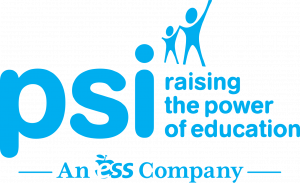Harnessing AI to Keep Kids Engaged in Learning During Summer
When school bells signal the end of the academic year, children often sprint into summer with a single thought: freedom from homework and tests. However, the long break also presents a prime opportunity for learning loss, often referred to as the “summer slide.” To counteract this, many parents are turning to artificial intelligence (AI) as a learning ally. AI can transform the summer months into an exciting extension of education. Let’s explore how parents can use AI to keep their children both excited and immersed in learning over the summer.
- Personalized Learning Platforms
AI-driven platforms like Khan Academy and Coursera use algorithms to personalize the learning experience. They can adjust the difficulty of tasks based on the learner’s performance, ensuring that your child is always challenged but never overwhelmed. These platforms cover a vast range of subjects and cater to different ages and skill levels, keeping learning fresh and exciting.
How to Use:
Sign up for a free or premium account, depending on the platform.
Let your child choose subjects of interest to explore at their own pace.
Encourage them to set weekly goals and track progress together.
- Language Learning Apps
Apps like Duolingo or Rosetta Stone have transformed language learning with AI integration. They provide interactive lessons that adapt to the user’s learning style and progress, making the acquisition of a new language fun and personalized.
How to Use:
Pick a language that your child shows interest in or that complements your summer travel plans.
Set daily practice reminders and engage in friendly competition by tracking streaks.
Practice real-world conversations to apply what they’ve learned through the app.
- Reading Companions
AI-powered tools like Amazon’s Alexa or Google Assistant can act as reading companions for your child. They can read interactive stories, answer questions, and even challenge children with quizzes about the story’s content.
How to Use:
Set aside reading time each day when your child can listen to or interact with the AI tool.
Have discussions about the story content to enhance comprehension.
Use the AI’s features to define unfamiliar words or provide synonyms to build vocabulary.
- Smart Educational Games
Learning-based games with AI elements adapt in real-time to your child’s interactions. Platforms like Prodigy for math or CodeCombat for coding turn educational content into fun, video game-like experiences.
How to Use:
Choose games that align with your child’s interests and academic needs.
Schedule regular ‘game time’ that is solely dedicated to educational gaming.
Discuss with your child what they learned and how they can apply it to real-life situations.
- Virtual Field Trips and VR Experiences
AI can bring distant places and historical events right into your living room. With virtual reality (VR) experiences, your child can explore museums, dive deep into the ocean, or walk on Mars, all while learning about the world in an immersive and interactive way.
How to Use:
Invest in a VR headset compatible with educational programs.
Plan a virtual field trip itinerary for your summer ‘staycation.’
After each trip, encourage your child to create a presentation or poster about what they learned.
- Discussion-Based AI
Sophisticated chatbots and discussion-based AI tools can conduct conversational lessons on a wide range of topics. These AI tutors are always available, providing a resource for children to ask questions and explore subjects deeper without time constraints.
How to Use:
Introduce your child to an AI chatbot that’s designed for educational purposes.
Help them learn how to pose questions and interact with the AI effectively.
Monitor conversations to ensure appropriate usage and reinforce learning outcomes.
- AI and Creative Expression
For children interested in the arts, AI can offer feedback on their creative works, whether it’s writing, music composition, or visual art. Tools like OpenAI’s MuseNet can inspire kids to create new music pieces or Jasper to aid them in writing stories.
How to Use:
Choose AI tools specially made for creative learning and expression.
Create weekly creative challenges using the AI’s insights or prompts.
Showcase their creations and encourage their efforts by providing positive feedback.
By leveraging AI, parents have an arsenal of tools to keep learning alive during the summer break. These innovative methods go beyond the traditional classroom setting, keeping children excited about learning and thirsty for knowledge. AI is not just a novel way to learn; it sets the stage for a lifetime of curiosity and discovery, ensuring that skills and enthusiasm carry over into the next academic year.






Leave a Reply
Want to join the discussion?Feel free to contribute!